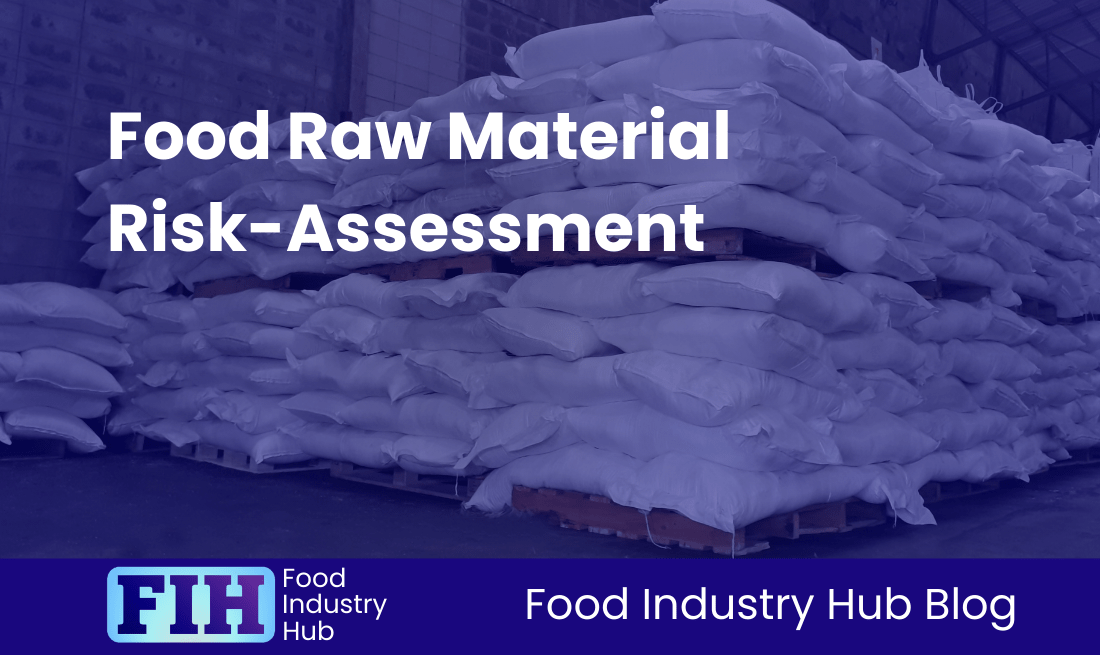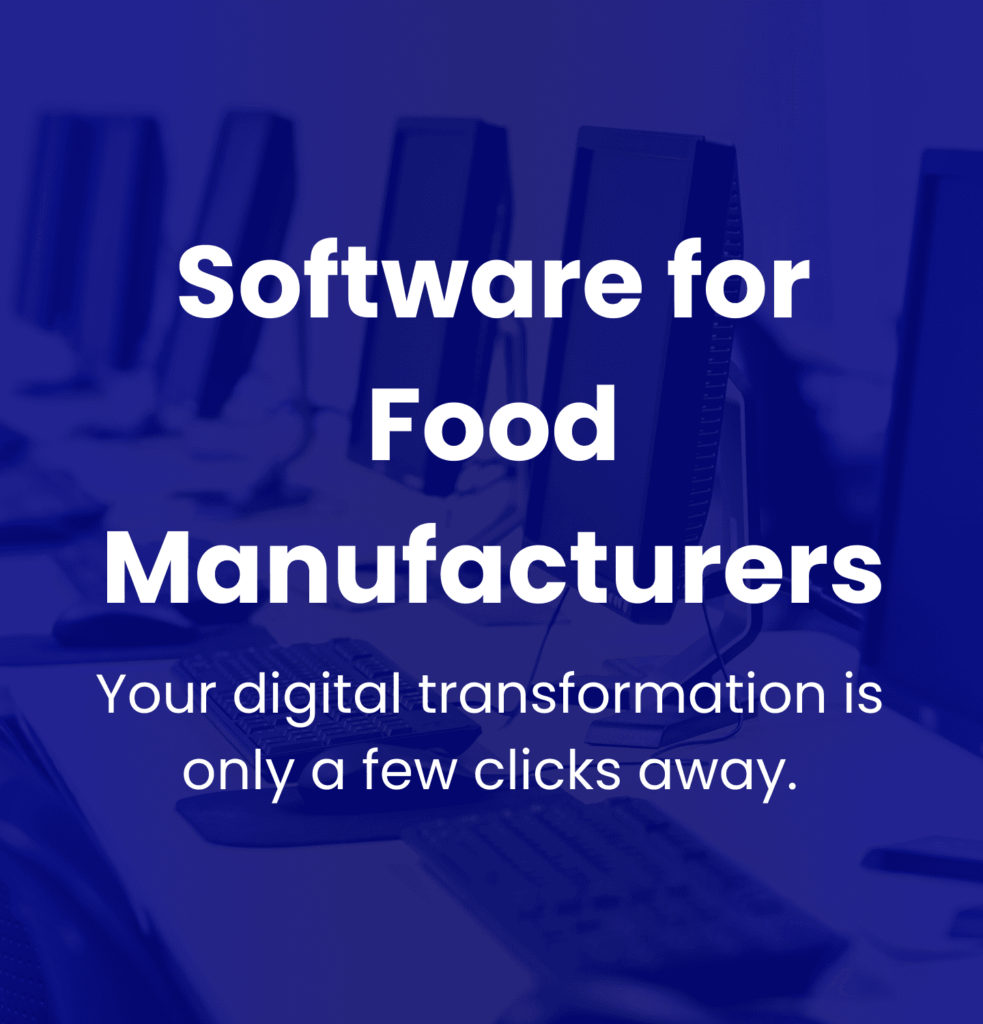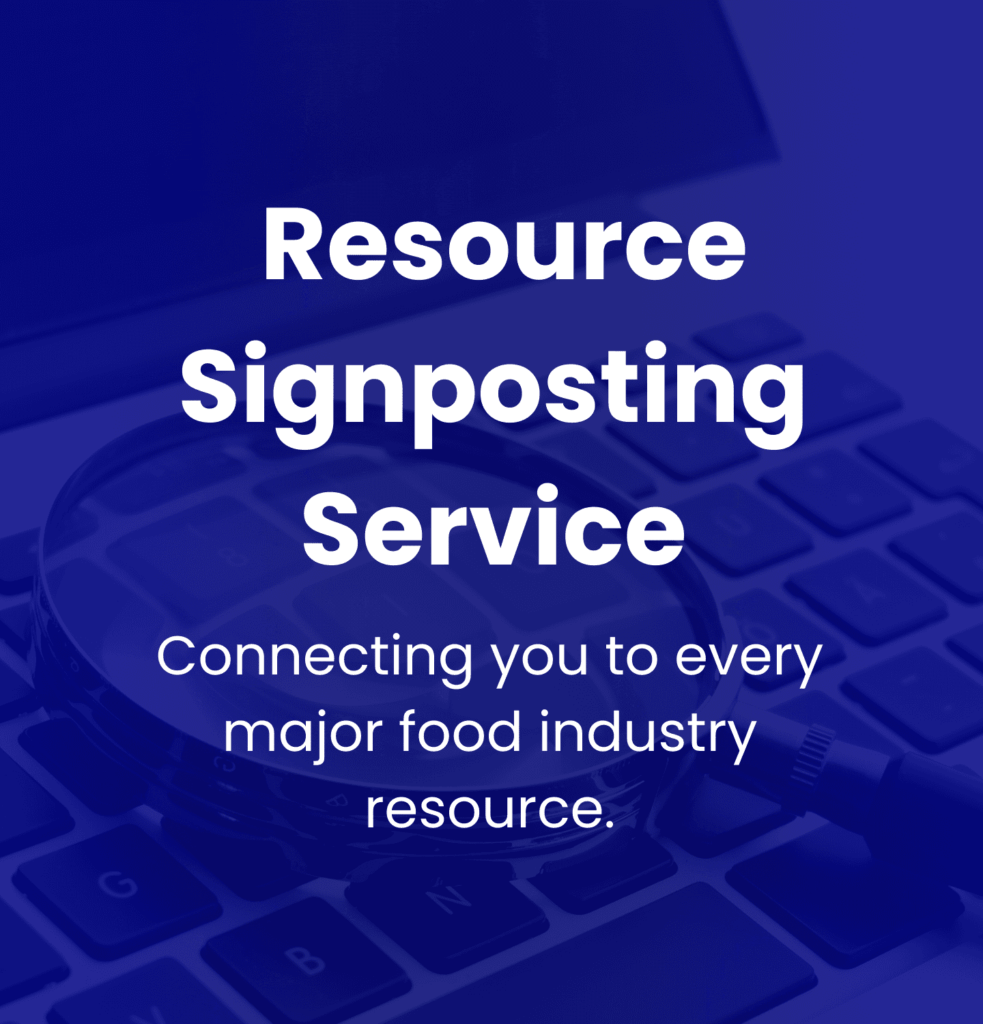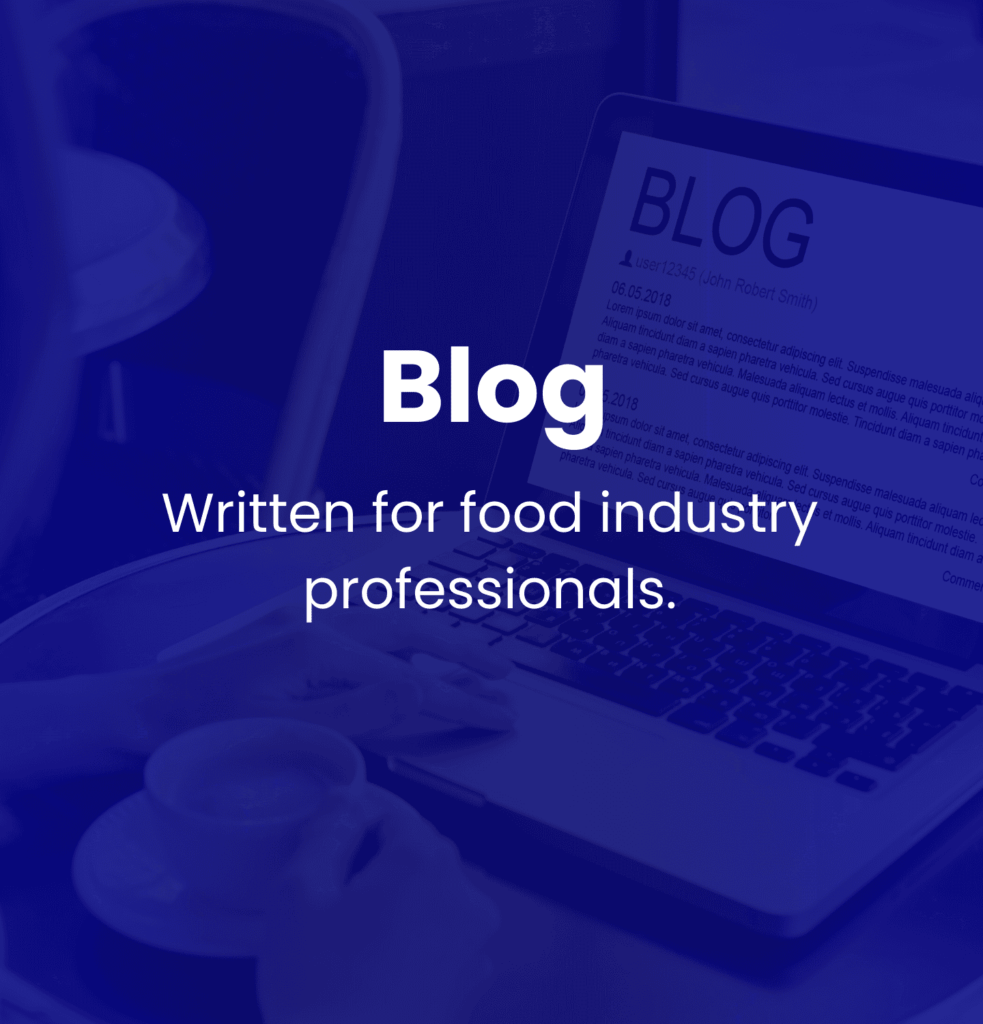Know: Additives
Contents
Introduction
Key Takeaways
Navigating the Regulatory Frameworks for Food Additives
Health Implications of Food Additives: A Deep Dive
The Purpose of Additives in Preserving Food Quality and Safety
Tracking Consumer Trends and Implications for Market Dynamics
Exploring Technological Innovations in Additive Production
Sustainability in Focus: Environmental Impact of Food Additives
Authenticity Checks and Balancing Supply Chain Integrity
Conclusion
Introduction
In the field of modern food manufacturing, food additives serve a key role, boosting flavours, refining textures, and safeguarding the safety and shelf-life of food products. These substances are instrumental in delivering a uniform and attractive food experience, allowing for large-scale production and distribution, and catering to consumer expectations for quality and safety. Additives aid in averting spoilage, maintaining nutritional quality, and aiding towards a more sustainable food supply, eventually influencing the direction of the food industry.
Food additives are described as substances deliberately added to food to accomplish precise technological results. They might encompass a varied range of ingredients such as preservatives, colourants, flavour enhancers, emulsifiers, and thickeners, each serving unique roles. Preservatives fight against microbial growth, guaranteeing food safety, whereas colourants boost appearance and allure. Emulsifiers demonstrate the ability to mix oils and water, a key factor for concocting stable sauces and dressings, while thickeners boost texture, making foods more enjoyable to eat.
In the sections to follow, we will delve into numerous themes pertaining to food additives. We will scrutinise the regulatory frameworks that oversee their utilisation, discussing how regulatory bodies ensure these substances fulfil safety regulations. Health issues will also be tackled, especially the potential negative effects some additives might cause. Furthermore, we will contemplate on the latest market trends influenced by consumer preferences for natural ingredients, technological innovations in additive production, sustainability matters considering environmental impact, and the importance of preserving transparency throughout the supply chain.
Comprehending the types of food additives and their roles is necessary for those working in the food industry. Preservatives, emulsifiers, flavour enhancers, thickeners, and colourants are the backbone upon which numerous food items are constructed. They ensure that these products not only comply with quality regulations, but also meet customer expectations. This knowledge equips the industry professionals with the insights required to navigate the intricate world of food additives.
Key Takeaways
Food additives are integral to modern food manufacturing, encompassing both product quality and safety and influencing consumer preferences. The regulatory environment relating to these additives is complex, exhibiting notable differences across regions such as the United States and the European Union. In the U.S., food additives are governed by the Food and Drug Administration (FDA), which enforces the Federal Food, Drug, and Cosmetic Act. This Act mandates that new substances receive pre-market approval, while ingredients generally recognised as safe (GRAS) are subject to a more expedited process. Complications can arise from state-level initiatives that might place additional restrictions on certain additives, prompting regular reviews and modifications by regulatory authorities.
Alongside regulatory nuances, health and safety are prime concerns. Food additives are expected to adhere to rigorous safety protocols aimed at mitigating health risks. However, public apprehension persists, amplifying the need for transparency and clearly labeled products to build consumer confidence in the safety of approved additives.
In recent years, a clear shift in consumer preferences towards ‘clean label’ and natural food items has been observed. With people becoming increasingly health-conscious, there is a growing demand for simpler ingredients, nudging manufacturers to reformulate their products accordingly. However, this demand can introduce challenges, given the potential tension between desiring natural options and maintaining food safety and nutritional value.
Imminent technological advancements have the potential to bolster the efficiency and safety of food additives. Progress could include enhanced extraction methodologies for natural additives and the creation of cleaner alternatives to traditional synthetic substances.
Furthermore, sustainability and supply chain integrity are surfacing as important themes within the scope of food additives. Expectations are growing for manufacturers to ensure that their supply chains are environmentally responsible, with transparency maintained throughout. This responsibility aligns with increasing consumer expectations, as sustainable practices become a mainstay of contemporary food production.
This article aims to untangle these compounded issues. By examining regulatory frameworks, implications for health and safety, consumer trends, technological advancements, and sustainability concerns, we aim to provide a detailed overview of the current state of food additives and its future.
Food Industry Hub Management Systems can significantly boost the effectiveness of your food safety and quality management system, leading to improved confidence and elevated quality assurance throughout your operations.
Navigating the Regulatory Frameworks for Food Additives
UK Standards Post-Brexit for Food Additive Authorisation
Subsequent to Brexit, the regulatory framework for food additives in the UK has noticeably emulated that of the EU, with a few noteworthy variations. The UK Food Standards Agency (FSA) continues to hold authority over food additives, akin to the role of the European Food Safety Authority (EFSA) within the EU. Yet, the authorisation process shows certain variances. The UK has decided to omit specific EU stipulations pertaining to the re-evaluation and monitoring of additive consumption, which may impact safety assessments and the degree of oversight. Notably, efforts are afoot by the FSA to modernise and streamline the approval process, aiming to eliminate red tape around applications for new food additives.
EU’s Detailed Safety Assessments Under Regulation EC No 1333/2008
The EU regulation EC No 1333/2008 governs the safety assessment of food additives in the EU, requiring thorough evaluations coordinated by the EFSA. These assessments scrutinise the safety, technological necessity, and any potential risks to consumers of the food additives. Each additive must comply with a ‘positive list’ which outlines approved additives and their specific conditions of use. The assessment process includes rigorous toxicological research, aiming to guarantee that additives neither mislead consumers nor pose any health risks. Each substance has an established Acceptable Daily Intake (ADI) to guide safe consumption levels.
State-Level Bans on Certain Food Additives in the U.S.
Though the Food and Drug Administration (FDA) largely oversees food additive regulations at a federal level in the U.S., individual states reserve the right to implement their own bans on certain substances. For instance, California’s Proposition 65 mandates that products containing specific chemicals associated with health risks, including certain food additives, must carry warning labels. Yet, state-level bans are less frequent compared to the encompassing federal framework, and these variations often reflect local health concerns rather than a cohesive national policy.
Global Compliance Standards and Legal Implications
Worldwide compliance standards for food additives show significant differences across regions. While the EU maintains a robust authorisation process stressing on consumer safety, the UK post-Brexit has carried over and adapted many EU regulations, altering a few. On the other hand, the U.S., with its Generally Recognized as Safe (GRAS) system, allows for a wider discretion for food manufacturers. Understanding these varying regulatory landscapes is essential for food manufacturers looking to step into international markets. Non-compliance can result in legal consequences, potentially leading to product recalls, fines, and loss of market access.
Interpreting Key Legal Jargon in Regulatory Frameworks
E Number
An ‘E Number’ denotes a code suggesting that a food additive has received safety assessment and approval for use within the EU. These numbers offer a standardised means of identification for various additives, playing a key role in informing consumers about ingredient safety on product labels.
GRAS (Generally Recognized as Safe)
In the United States, a GRAS designation indicates that food additive is generally recognised by qualified experts as safe under its intended use conditions. This acknowledgement enables manufacturers to use these additives without needing formal approval from the FDA, provided there’s ample scientific consensus asserting their safety.
ADI (Acceptable Daily Intake)
The Acceptable Daily Intake (ADI) represents the maximum amount of a substance that can be consumed daily over a lifetime without posing significant health risks. Regulatory bodies, such as the EFSA, set these values based on comprehensive safety evaluations, ensuring that the use of food additives stays within the safe limits for the public. Gaining insights into these terms and understanding their implications plays a key role in regulatory compliance and ensuring consumer safety in the food manufacturing sector.
Health Implications of Food Additives: A Deep Dive
Toxicological Assessments and Re-evaluations of Certain Food Additives
Amid increasing scrutiny over the safety of food additives, health concerns related to their consumption have become prominent. Specific additives like potassium bromate and titanium dioxide have caught attention because they may pose health risks, including the potential for triggering carcinogenic effects and causing DNA damage. As an example, potassium bromate is prohibited in many countries, such as those in the European Union. However, it is still allowed in the U.S. These anomalous regulations underscore the need for continual toxicological evaluations to safeguard consumer health. The Joint FAO/WHO Expert Committee on Food Additives takes a significant role in these safety evaluations, promoting the revision of these reviews in light of emerging evidence.
The Ongoing Debate: Natural vs. Synthetic Additives
The discourse on natural and synthetic additives grows more animated as the tastes of consumers evolve. Generally viewed as safer options, natural additives, often obtained from plant sources, are increasingly preferred by health-conscious buyers. In contrast, synthetic additives, such as aspartame and artificial colours, have sparked concerns over potential health effects including neurobehavioral problems and carcinogenic threats. The rising demand for ‘clean label’ products—with fewer and more identifiable ingredients—indicates the noted shift towards natural additives. Nonetheless, the perception of natural additives as inherently safer by consumers does not negate the necessity for strict testing to verify their safety and effectiveness, given the lack of standardisation in this sector.
Challenges of Maintaining Adherence to ADI
The Acceptable Daily Intake (ADI) is a measure used for appraising the safety of food additives. But ensuring compliance with these limits is laden with considerable challenges. One notable concern is stemming from cumulative exposure—as consumers can come across various additives daily across different products, which could lead to intake beyond safe consumption levels. Regulatory authorities grapple with colossal hurdles in overseeing these interactions and implementing compliance efficiently. Moreover, individual sensitivities, particularly in susceptible groups such as children and pregnant women, increase the complexity of establishing universally safe intake levels, thus calling for a more bespoke approach to regulatory management.
Key Health Terminologies Explained
Clean Label
A clean label pertains to food products with ingredients that consumers can easily understand and identify. This pattern has grown out of consumer needs for transparency about what they consume, favouring natural ingredients over synthetic counterparts. The importance of clean labelling is in its capacity to address health worries and enhance consumer confidence in food products, resulting in an improved market presence for companies that adhere to these standards.
Synbio and Its Impact on Natural Additives Production
Synbio, or synthetic biology, is a process that utilises genetic engineering to efficiently produce biological systems or compounds. In the context of food production, synbio can create natural additives more sustainably using engineered microorganisms that emulate the properties of traditional ingredients. This innovation permits greater production consistency and scalability, catering to the growing consumer demand for natural products while mitigating environmentally detrimental impacts associated with more traditional production methods. Notwithstanding, the incorporation of synbio in creating food additives also initiates debate about consumer acceptance and the long-term effects of using genetically engineered ingredients in our food supply.
The evolving discussions revolving around food additives underscore the dynamic interplay of consumer preferences, health implications, and regulatory challenges. These debates prompt the food manufacturing sector to adopt practices that equally prioritise safety and transparency.
Sign-up for the Food Industry Hub Mail Service
We regularly produce new content for food industry professionals, and the Food Industry Hub Mail Service is the best way to stay up to date with the latest additions.
Signup today to be added to the Food Industry Hub mailing list.
The Purpose of Additives in Preserving Food Quality and Safety
Additives significantly contribute towards preserving both the quality and safety aspects of our food. They aid in extending shelf life, intensifying flavour, crafting favourable textures, and boosting nutritional profiles. Additionally, they assist in restricting spoilage and mitigating the spread of foodborne illnesses.
Prolonging Shelf Life with Additives
In curbing the expiration of food, preservatives, a type of additive, stand out. Their primary purpose lies in inhibiting spoilage triggered by microorganisms like bacteria, mould, and yeast. Sodium benzoate and nitrates, for instance, find their way into numerous processed foods due to their ability to deter harmful bacterial and fungal growth. The popular natamycin is used extensively in the preservation of cheese and some meats, where it hinders mould formation [Source: EUFIC].
Enhancement of Flavour via Additives
Flavour enhancers like monosodium glutamate (MSG) are leveraged to amplify food flavours, increasing overall palatability. Traditional food manufacturing includes natural ingredients such as herbs and spices for flavour enhancement to ensure a balance of taste and consumer acceptance.
Improving Food Texture with Additives
Altering texture is another significant aspect of food additives. Substances like emulsifiers, stabilisers, and thickeners add to the appeal of food products by providing distinct textures. Such additives help to uphold the velvety consistency of ice cream, for instance, and also ensure that mayonnaise retains its creamy texture, making it appealing to consumers [Source: FDA].
Enriching Nutritional Profiles via Additives
Food items can also see an enrichment of their nutritional profiles with the aid of additives. Vitamins and minerals are frequently introduced to boost the nutritional value, particularly for products that might lose their essential nutrients during processing or that aim to serve segments of the population with specific dietary deficiencies. Iron, used commonly in cereals, helps to address anemia in susceptible demographic groups [Source: FhaFnb].
Prevention of Spoilage and Spread of Foodborne Illnesses
Additives serve an important function in mitigating spoilage and curtailing the risk of foodborne illnesses. Antimicrobial preservatives like sorbic acid and benzoic acid function by inhibiting bacterial and fungal growth, thereby reducing the likelihood of food poisoning. Antioxidants, such as ascorbic acid, not only stave off the oxidation that could result in spoilage but also aid in preserving the visual appeal of fresh produce by preventing browning.
In essence, additives are integral in the maintenance of food products’ quality, safety, and appeal, making them indispensable in contemporary food systems. Their roles enhance consumer satisfaction and contribute significantly towards public health by facilitating safe food consumption.
Tracking Consumer Trends and Implications for Market Dynamics
The clean-label movement is prominently reshaping the food manufacturing sector, as triggered by consumer demand for transparency, simplicity, and natural ingredients. The movement emphasises ingredient clarity where consumers are increasingly showing interest in products that are absent of artificial additives and preservatives. Findings highlight that over 75% of global consumers show readiness to pay an extra charge for clean-label products, indicating a significant predilection for options they perceive to be safer and healthier [Source: GlobeNewswire].
As a result of these shifts, novel developments in plant-based and multifunctional additives are swiftly surfacing. Companies are increasingly making strides towards creating alternatives to traditional ingredients. For instance, plant-based proteins from enterprises like Beyond Meat and Impossible Foods are gaining momentum among consumers seeking both clean-label claims and sustainable diets. Moreover, natural preservatives such as rosemary extract and vinegar are now under exploration to replace synthetic alternatives while securing product safety and quality [Source: Food Chain Magazine].
Market dynamics are changing in correspondence with consumer preferences, with an intensified focus on health and ethically-sourced ingredients. Consumers are not just shopping for cleaner products – they also give priority to sustainability and ethical practices in ingredient sourcing. Such consumer behaviour has stimulated companies to tailor their offerings in line with these demands. The global clean-label ingredients market is expected to ascend to USD 212.4 billion by 2030, representing the financial incentives for companies that are reactive to these developments.
Unravelling Consumer Linguistics in Market Dynamics
The term ‘functional class’ points to the categorisation of ingredients based on their unique roles within food products. This system of classification allows manufacturers to identify and analyse additives, providing valuable information for product development and compliance with regulations.
Food databases serve as a significant resource in tracking and scrutinising these categories, offering capabilities for researchers and food manufacturers to monitor evolving consumer trends and preferences effectively. These databases accumulate data on ingredient functionality and can direct product innovation by advising manufacturers about market requests and regulatory rules.
Grasping the implications of consumer linguistics, such as clean labelling associations, remains key for stakeholders aiming to meet market expectations. With consumers becoming more sophisticated about product content and ethical sourcing, tuning into these linguistic cues will be essential for success within the transforming food production landscape.
Exploring Technological Innovations in Additive Production
Precision fermentation and enzyme optimisation have emerged as significant advancements within the biotechnological industry, enabling the creation of natural additives such as enzymes, proteins, and flavouring agents. Additionally, the development of smart preservatives also plays a role in fostering innovations in food safety and sustainability.
Precision Fermentation in Producing Natural Additives
Precision fermentation utilises engineered microorganisms designed to function as cell factories, producing specific bioactive compounds with high purity and stability. This method addresses functional and ethical considerations in food manufacturing, enabling scalable production with minimal environmental impact. An example of this is the ability to produce vegan rennet for cheese-making, a move that aligns with consumer preferences for sustainable food options [Source: Biocatalysts].
Enzyme Optimisation for Enhanced Food Additive Functionality
A key component of precision fermentation is enzyme optimisation, which elevates the functionality of food additives in production processes. By introducing specific genes into microbial hosts, enzymes can be tailored to perform precise roles, such as improving texture and flavour. This approach not only amplifies enzyme efficacy but also promotes consistency in product yield, reducing costs associated with less efficient methods of enzyme production. Optimised enzymes can result in notable improvements in operational efficiency and product quality, meeting market demands for transparent and sustainable practices [Source: PubMed].
Innovations of Smart Preservatives and Their Prospective Benefits
Smart preservatives are redefining food safety and sustainability. They are designed to increase the shelf life and safety of food without using traditional, potentially allergenic substances. Through precision fermentation, innovative preservatives with improved antimicrobial properties can be developed without relying on animal-derived inputs. For instance, lysozyme, typically sourced from egg whites, can now be produced through precision fermentation techniques. This innovation aligns with regulatory demands for cleaner ingredients and aids manufacturers in meeting consumer expectations for ethically sourced food products.
Decoding Technical Terms in Food Tech
Technical terms in food technology such as ‘PGPR’ and ‘EFSA re-evaluation’ reveal the balance between functionality and evolving food safety regulations.
PGPR (Polyglycerol Polyricinoleate) and EFSA Re-evaluation
Polyglycerol Polyricinoleate (PGPR) is a synthetic emulsifier commonly used in food products such as chocolate and margarine to enhance texture and stability. The European Food Safety Authority (EFSA) plays an essential role in maintaining consumer confidence by regularly re-evaluating food additives like PGPR to ensure they meet safety standards. This process involves integrating new scientific data, which can impact how ingredients are used in food production.
The Significance of EFSA Re-evaluation
The ongoing assessment of substances such as PGPR denotes a commitment to consumer safety and transparency in the food supply chain. With increased consumer scrutiny around ingredients, organisations like EFSA maintain that all food additives align with current safety and efficacy benchmarks. Regulatory actions reflect the industry’s evolution towards safer, more sustainable practices as technological innovations continue to shape additive production.
Sustainability in Focus: Environmental Impact of Food Additives
Natural and synthetic additives play a common role in our food system, but they also present unique sustainability trade-offs. It’s essential to examine the environmental impact associated with both types, from extraction and manufacturing to use and disposal.
Natural vs Synthetic Additives: Sustainability Trade-offs
Natural additives, often derived from plants like turmeric and beetroot, are generally perceived as environmentally friendly options. Their production typically involves fewer resources and results in less hazardous waste compared to synthetic versions. Additionally, many of these natural ingredients provide the advantage of being more biodegradable, thus, lessening their impact on soil and water systems when they become waste [Source: ESG Investor]. However, the production of natural additives is not without its environmental cost. Variability in potency may necessitate using larger quantities to achieve desired effects. Furthermore, sourcing can lead to environmental issues such as habitat destruction due to over-harvesting certain crops. Heightened demand for specific natural ingredients might also escalate availability issues and disturb ecological balance.
Conversely, synthetic additives offer different pros and cons. These additives typically provide more consistent quality and can be produced with a lesser environmental impact where extracting natural sources is difficult. Their tailored design often allows precision in functionality, making them cost-effective in use [Source: EUDL]. Nonetheless, many synthetic additives originate from petroleum-based compounds, implying problems such as pollution and waste. Additionally, their energy-intensive manufacturing processes do not align with rising consumer preferences for natural alternatives [Source: Food Ingredient Facts].
Environmental Footprint of Sourcing and Production Processes
Both natural and synthetic additives bear a notable environmental impact regarding sourcing. Natural sourcing can result in habitat destruction or inefficient use of resources. In contrast, synthetic sourcing often depends on non-renewable energy sources contributing to increased industrial pollution.
In the context of production, synthetic additives’ creation typically involves complex chemical processes, producing significant greenhouse gas emissions. On the other hand, whilst the manufacture of natural additives might generally emit lower greenhouse gases, it can still require substantial energy for extraction and processing.
Consumer Tilt Towards Sustainable Choices in Food Additives
Consumer awareness of sustainability is increasing. This development has initiated a shift towards products representing responsible sourcing and production practices. Consequently, demand is growing for naturally sourced and environmentally friendly food additives. The wellness market, with an emphasis on health and sustainability, is projected to expand further, championing ingredients that align with these values.
Reacting to this change, food manufacturers are constantly innovating to develop sustainable alternatives to traditional food additives. Developments such as bio-based nutritional ingredients and natural fermentation processes not only enhance product functionality but also reduce waste throughout the supply chain.
Understanding this sector necessitates a balanced consideration of environmental impact, sustainability in sourcing, and changing consumer preferences. As the digital world amplifies consumer awareness, companies prioritising sustainable production practices in additive production are likely to gain a competitive edge.
Authenticity Checks and Balancing Supply Chain Integrity
Verifying the authenticity of natural additives is an ongoing challenge in the face of widespread food fraud. Various analytical techniques allow us to determine whether these additives live up to their claims.
Proactive Methods for Verifying the Authenticity of Natural Additives
An effective technique is isotope analysis, a process that gauges isotopic ratios such as carbon, nitrogen, and sulfur in raw materials. These findings can pinpoint the geographical origins of specific natural additives, offering insights into their authenticity and potential adulteration. For example, carbon isotopes can reveal the plant source of a food item, while nitrogen and sulfur isotopes might show the conditions under which the food was grown and processed.
Additional techniques like metabolomics and proteomics are also gaining traction. These methods use mass spectrometry to generate a comprehensive biochemical profile of additives, highlighting any anomalies from expected standards. Such detailed analysis aids food manufacturers in maintaining supply chain integrity and consumer trust.
The Role of Blockchain Technology in Enhancing Traceability
Blockchain technology is increasingly important in preserving supply chain integrity, thanks to its decentralized, unchangeable record of transactions. This allows real-time tracking of products, reducing the risk of counterfeiting and boosting consumer confidence in the authenticity of food products.
The transparency of blockchain encourages adherence to regulatory standards by enabling stakeholders to confirm the sources of food additives and track their progress through the supply chain. As consumers increasingly demand safe and ethically sourced products, such transparency becomes key.
Emerging Pressures for Ethical Sourcing of Food Additives
Both consumers and regulatory frameworks are driving a push for ethical sourcing among food manufacturers. Modern consumers often favour products that meet sustainable and ethical production standards, prompting companies to place priority on transparency and accountability within their supply chains [Source: Institute of Food Science and Technology].
Increasing regulatory pressures highlight the importance of documenting sourcing practices and adhering to ethical guidelines. To meet these needs, manufacturers turn to solutions like blockchain technology that promote transparency and accountability, building consumer trust in the process.
Deciphering Industry Lingo in Authenticity and Supply Chain Management
Novel foods, which include ingredients derived from new sources or through innovative methods, significantly impact the food additive market. As these products gain popularity, ensuring their authenticity becomes key. Regulating these novel additives and addressing consumer worries about safety and quality are central to good market practices.
Another tool in authenticating food additives is FTIR (Fourier Transform Infrared Spectroscopy). While not as commonly used as isotope analysis, this technique analyses molecular structures by measuring their absorption of infrared radiation, effectively creating a chemical fingerprint that can be compared against known samples. This data can reveal further information about the composition of food additives, and highlight potential adulteration or mislabelling. By leveraging these advanced methodologies, manufacturers can assure authenticity in their supply chains.
Conclusion
The regulatory landscape for food additives is complex, enveloping multiple frameworks to uphold consumer safety and product quality. The U.S. Food and Drug Administration (FDA) functions under the Federal Food, Drug, and Cosmetic Act. This act distinguishes food additives requiring pre-market approval and acknowledges substances classified as Generally Recognized as Safe (GRAS). Such substances can bypass this requirement if they are deemed safe by experts.[Source: FDA]
Health and Safety Implications of Food Additives
Although food additives undergo rigorous pre-market testing, concerns remain about certain substances that could pose health risks. Various artificial colours and preservatives have been associated with adverse health outcomes. This has led to state-level bans and rising scrutiny from regulatory bodies and consumer advocacy groups. The Center for Science in the Public Interest, for instance, closely monitors food additives, giving ratings to aid consumers in making informed decisions.[Source: Center for Science in the Public Interest]
Changing Market Dynamics
Market dynamics have evolved in significant ways as consumer preferences shift towards natural and minimally processed ingredients. The demand for clean-label products is changing how food manufacturers approach additive production. This has resulted in a transition from synthetic to naturally derived alternatives. This shift raises challenges for manufacturers in navigating an intricate mix of state and national regulations. These regulations widely vary, demonstrating regional differences in consumer attitudes towards food additives.[Source: Pew Charitable Trusts]
Technological Advancements
Technological advancements are enhancing food quality and safety. Innovations like high-pressure processing and non-thermal pasteurisation offer better food preservation methods, enable an extended shelf life without traditional preservatives. Alongside these, improvements in data analysis and monitoring technologies allow for more effective assessments of food safety. These can inform regulatory frameworks and foster required adjustments as new information becomes available.[Source: Food Safety]
Sustainability Norms and Supply Chain Integrity
As sustainability norms and supply chain integrity rise in importance in the production of food additives, transparency regarding the origins and production processes of food ingredients has become a consumer expectation. Companies need to ensure that their practices meet these standards. This includes prioritising responsible sourcing, minimising environmental impacts during production, and upholding ethical principles throughout the supply chain. Implementing sustainable methods is a key aspect in not just adhering to emerging regulations, but also earning the trust of environmentally conscious consumers.[Source: WHO]
In recapitulation, the evolving regulations around food additives are influenced by a multitude of factors. These include health and safety implications, market dynamics shaped by consumer trends, technological innovations, and the push for sustainability. As the industry navigates these intertwined challenges and opportunities, continued collaboration will be essential for enhancing overall food quality and safety while meeting consumer needs.
About The Food Industry Hub Knowledge Centre
The Food Industry Hub knowledge centre delivers informative content on a variety of topics pertinent to the food manufacturing industry.
You can return to all topics by clicking here.
From The Food Industry Hub Signposting Service
Additional resources from The Food Industry Hub Signposting Service.
From The Food Industry Hub Blog
Expanding on this topic with related content from our blog.










